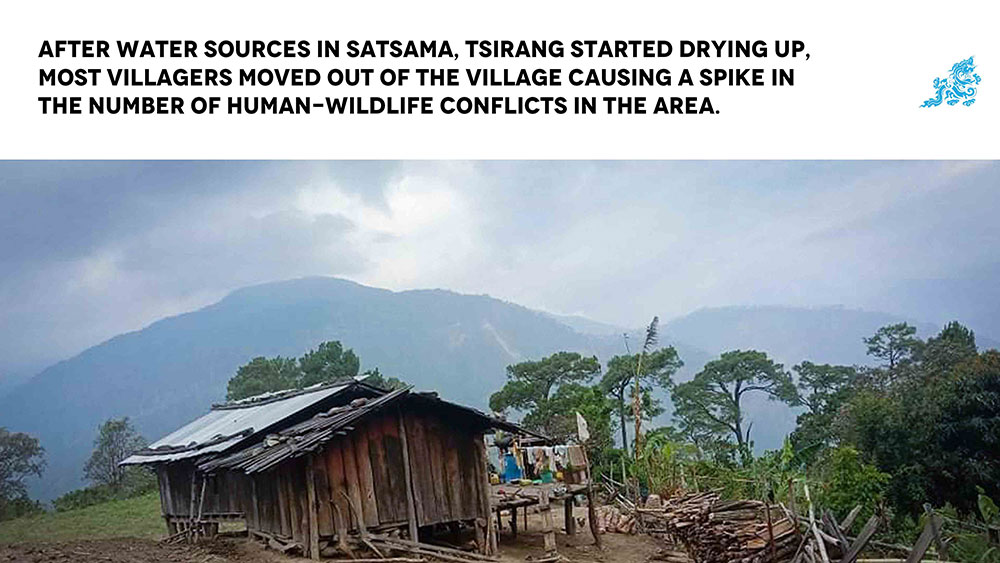One house, one village. This is Satsama in Sergithang, Tsirang, a village deep in a dense forest. For miles around, there is nothing but thick jungle and a house, a veritable medieval village untouched by modern development.
No internet, electricity, or road connectivity.
It was a sizeable community before the people began to move out from the village. To get to Satsama, it takes many hours of walk through valleys, deep gorges and mountain. There is a small mule track.
There were about 10 households in Satsama not many years ago. Today, there is just one.
It was water shortage that made the people of Satsama abandon the village. Over the years, human-wildlife conflicts increased and living became challenging for the people. With the village becoming smaller, human-wildlife conflicts are a growing problem in Satsama.
In Satsama today, Ap Nala, 66,and his 58-year-old wife, Budham, live alone.
It’s a difficult life for the couple, far-removed from the madding crowd. It’s a life of extreme poverty. They could not settle elsewhere even as water shortage is a severe problem in the village.
Nala and his wife forage the forests for food and fuelwood every day. Sometimes, they come face-to-face with wild animals.
“But this is how we must survive here,” said Nala. “Even for safe drinking water, we must walk for more than 30 minutes.”
Is it climate change affecting the village?
Nala says it is “namshi jurwa”.
There used to be abundant water in Satsama. It was a thriving village in many senses. All of a sudden, almost, water sources began to dry up, and the people began to move out in ones and twos.
In Satsama today, only maize and millet grow. Chilli used to be the main cash crop in Satsama, not anymore.
Nala’s daughter, Choden, said that the issues were raised during gewog and dzongkhag meetings repeatedly. However, the gup could not be contacted to verify the information.
When teaching-learning is moving online, children in this village are facing a major challenge.
Budham walks for more than five kilometres to buy essentials like oil, rice, and salt.
Monsoon is the worst season. Nala’s household has to go without these bare necessities for weeks on end.
Sickness is another problem. In emergency cases, patients have to go to either Kamichhu or Migtana primary health centre, almost a day’s walk from Satsama.
“Challenges are many, of course,” said Nala. “Sometimes I think this is what Gyalyong Gakid Pelzom truly means.”
Light is living Satsama. Late evening. Nala and his wife head to the jungle for firewood. This is their daily routine.
By Sonam Jamtsho
Edited by Jigme Wangchuk


